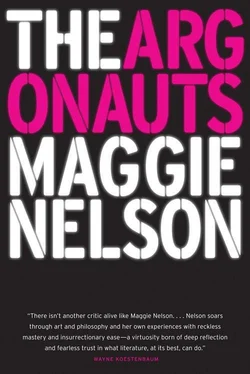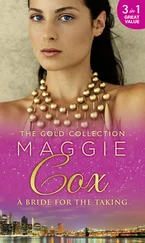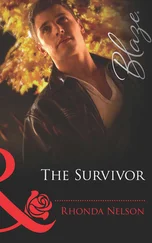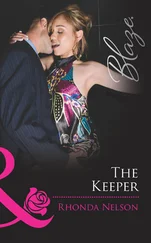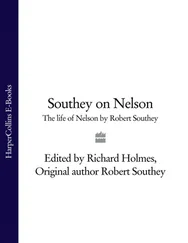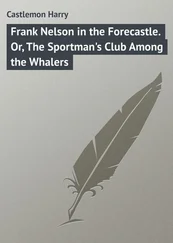The slides were over, the talk was over, it was Krauss’s turn. She scooted her chair up to the table and shuffled her papers. She was Gallop’s inverse — sharp face, classy in a silk scarf, Ivy League, Upper East Side way. Feline, groomed, her thin dark hair in a bob. Kind of like the Janet Malcolm of art history. She started by saying how important Gallop’s daring and thorough work on Lacan had been. This praise went on for some time. Then, theatrically, she swerved. The importance of this early work is why it is so deeply disturbing to behold the mediocrity, naïveté, and soft-mindedness of the work Gallop has presented to us today . The color drained out of Gallop’s face. Krauss ignored her, and went in for the kill.
The room thickened with the sound of one keenly intelligent woman taking another down. Dismembering her, really. Krauss excoriated Gallop for taking her own personal situation as subject matter, accused her of having an almost willful blindness to photography’s long history. She alleged — or so I recall her alleging — that Gallop had misused Barthes, had failed to place her investigation in relation to any lineage of family photography, had punted on the most basic aesthetic concepts in art history, and so on. But the tacit undercurrent of her argument, as I felt it, was that Gallop’s maternity had rotted her mind — besotted it with the narcissism that makes one think that an utterly ordinary experience shared by countless others is somehow unique, or uniquely interesting.
It’s true that Gallop is no art historian, certainly not in the way that Krauss is. (Nor was Barthes, for that matter, but artistry trumps mastery.) And Krauss has always been something of a pugilist, just as Gallop has always been something of a narcissist — two perversities that proved, on this occasion, to be incompatible. But the lashing Gallop received that day stood for some time in my mind as an object lesson. Krauss acted as though Gallop should be ashamed for trotting out naked pictures of herself and her son in the bathtub, contaminating serious academic space with her pudgy body and unresolved, self-involved thinking (even though Gallop had been perfecting such contamination for years). But staging a fling with a philosopher was one thing; a pudgy mother in love with her son and her ugly scribble shirt was another.
I didn’t have a baby then, nor did I have any designs on having one. Nor have I ever been what you might call a baby person (nor an animal person, nor a garden person, not even a house-plant person; even urgings toward “self-care” often irritate or mystify me). But I was enough of a feminist to refuse any knee-jerk quarantining of the feminine or the maternal from the realm of intellectual profundity. And, as I remember it, Krauss was not simply quarantining; she was shaming. In the face of such shaming, I felt no choice. I stood with Gallop.
In Arabic, the word for fetus derives from jinn , which means “hidden from sight.” No matter how many ultrasounds you’ve had, no matter how well you feel you’ve gotten to know your baby’s rhythms in utero, the baby’s body is still a revelation. A body! An actual body! I was so in awe of Iggy’s fantastic little body that it took a few weeks for me to feel that I had the right to touch him all over. Before Iggy, it always startled me to see a parent stuffing a Kleenex in the face of an unsuspecting toddler, as if a kid were just an object whose physical autonomy could be violated any time some stray mucus appeared. I wanted to attend to Iggy, but I didn’t want to ambush him. Also, the culture’s worrying over pedophilia in all the wrong places at times made me feel unable to approach his genitals or anus with wonder and glee, until one day I realized, he’s my baby, I can — indeed I must! — handle him freely and ably. My baby! My little butt! Now I delight in his little butt. I delight in pouring water over his head with a toy boat full of holes, wetting his blond curls, matted with butter from a plate he recently made into a hat.
Luckily, Iggy couldn’t care less. He is stalwart, has a high tolerance for physical intrusions. Within his first year of life, he withstood a spinal tap, several catheterizations, a contrast enema, electric shocks, nuclear scans, countless IVs, and an infusion of rare antibodies harvested from other people’s bodies (an infusion that, had we not had health insurance, would have cost $47,000 for the vial, an amount that puts the price of frozen sperm to shame). All that said, his native joy and robustness have continued, unabated. Until he grows too heavy, I carry him always and everywhere, even against the rules (making pancakes at the stove, walking down steep trails, etc.). When we go on the road together, I let him drag around my enormous roily-bag at the airport, even though he’s been ambulatory for only a few weeks. He insists. I recognize his insistence. I ignore the books that sternly advise against rocking or nursing your baby to sleep, so that she learns to go to sleep by herself; I am blessed with the time and the desire to hold Iggy until he slips off, and so I do. I wait and wait and wait until I hear a sleep rattle enter his breath, I watch his eyes flutter open and closed, open and closed, a hundred times, until finally they stay shut. I know from raising my stepson that this ritual won’t last forever — Iggy’s babyhood is already speeding away. By the time this book is published, it will be gone. Sturdy pilot, he flips over the coffee table and rides.
I adore Winnicott. But the perversity is not lost on me that the most oft-cited, well-respected, best-selling books about the caretaking of babies — Winnicott, Spock, Sears, Weissbluth— have been and are mostly still by men. On the front cover of The Baby Book —arguably one of the more progressive contemporary options (albeit oppressively heteronormative) — the byline reads “by William Sears (MD) and Martha Sears (RN).” This seems promising(ish), but nurse/wife/mother Martha’s voice appears only in anecdotes, italics, and sidebars, never as conarrator. Was she too busy taking care of their eight children to join in the first-person? I look down at my well-loved copy of Winnicott on the Child and note that it comes laden with not one, not two, but three introductions by male pediatricians (Brazelton, Greenspan, Spock). What kind of bubble would burst if a lady shrink were presumed to add value to his legacy? Why don’t I myself seek out child-care books by women? Am I unconsciously channel-surfing for the male weatherman? How could Gallop, or any mother, however whip-smart, present the rule of negative gynecology and be taken as seriously as Sloterdijk? I’m boring myself with these reversals (feminist hazard).
In Dr. Sears’s The Baby Book there’s a little sidebar (written by Martha?) called “Sexual Feelings While Breastfeeding,” which attempts to reassure you that such feelings don’t mean you’re a pedophile freak. It says that you’re basically hormonal soup, and because the hormones unleashed by breast-feeding are the same as those unleashed by sex, you could be forgiven for the mix-up.
But how can it be a mix-up, if it’s the same hormones? How does one go about partitioning one sexual feeling off from another, presumably more “real” sexual feeling? Or, more to the point, why the partition? It isn’t like a love affair. It is a love affair.
Or, rather, it is romantic, erotic, and consuming — but without tentacles. I have my baby, and my baby has me. It is a buoyant eros, an eros without teleology. Even if I do feel turned on while I’m breast-feeding or rocking him to sleep, I don’t feel the need to do anything about it (and if I did, it wouldn’t be with him).
In the years to come, this affair will likely become unrequited, or so I’ve heard. All the more reason to hail the moment’s autotelia.
Читать дальше
